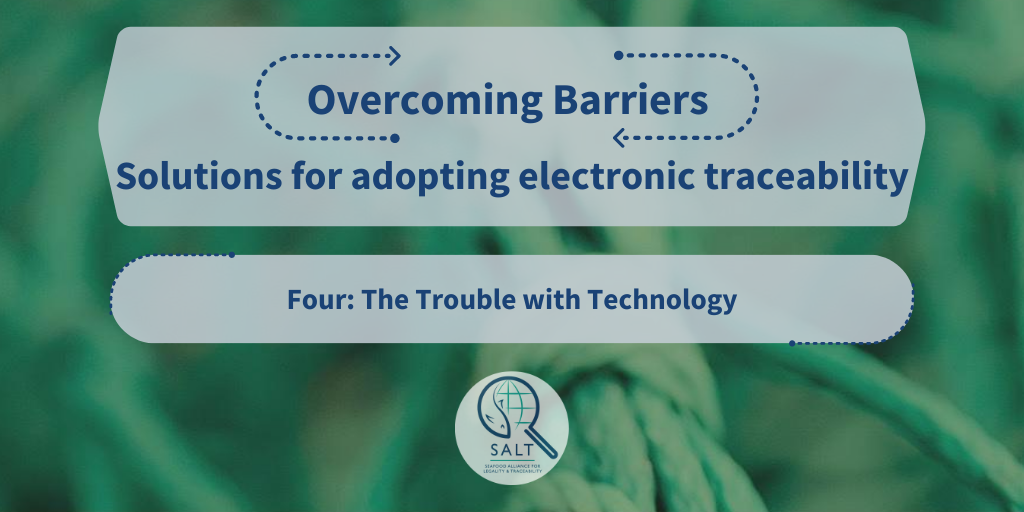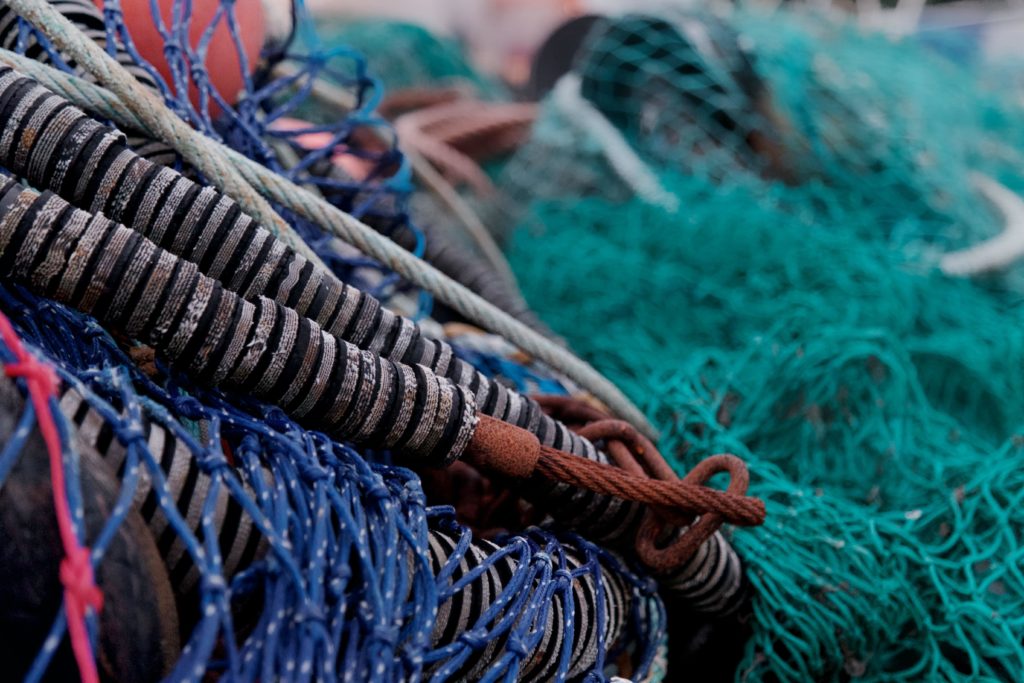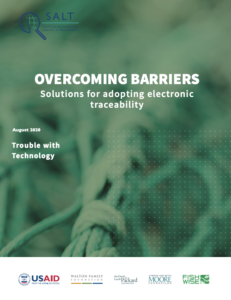
Chapter four in SALT's "Overcoming Barriers" series on adopting electronic traceability
Trouble with Technology
Introduction
Illegal, unreported, and unregulated (IUU) fishing damages fish stocks around the globe. Additionally, illegal fishing practices can sometimes occur alongside human rights abuses. Now, the world is waking up to these injustices. Government import regulations are working to ensure illegal products don’t enter their national markets, and some consumers are voicing their preference for certified and sustainably harvested fish1.
Thankfully, companies currently deliberating making the switch to electronic traceability are not the first companies to undergo this conversion. The trailblazers who have piloted electronic traceability, along with their NGO partners, have written case studies, described solutions that helped them overcome obstacles, and created tools to make the process easier for others. Here, SALT has distilled this information to walk the seafood industry through the barriers to adopting electronic traceability and provide potential solutions to overcoming the challenges a company might face. This blog is the fourth in the series, “Overcoming Barriers: Solutions for adopting electronic traceability.”

In the previous “Overcoming Barriers” blogs, SALT addressed the indirect and direct benefits for industry when widespread electronic traceability is adopted, as well as the challenges of sharing data seamlessly across the supply chain. In this blog, SALT covers the trouble with technology and highlights potential solutions. Namely, we address the “trouble with technology” by:
- Explaining the role of technology in traceability
- Outlining unique technology solutions available to a company
- Walking through how to assess technological needs
- Sharing points to consider and lessons from electronic traceability pilots across the globe

